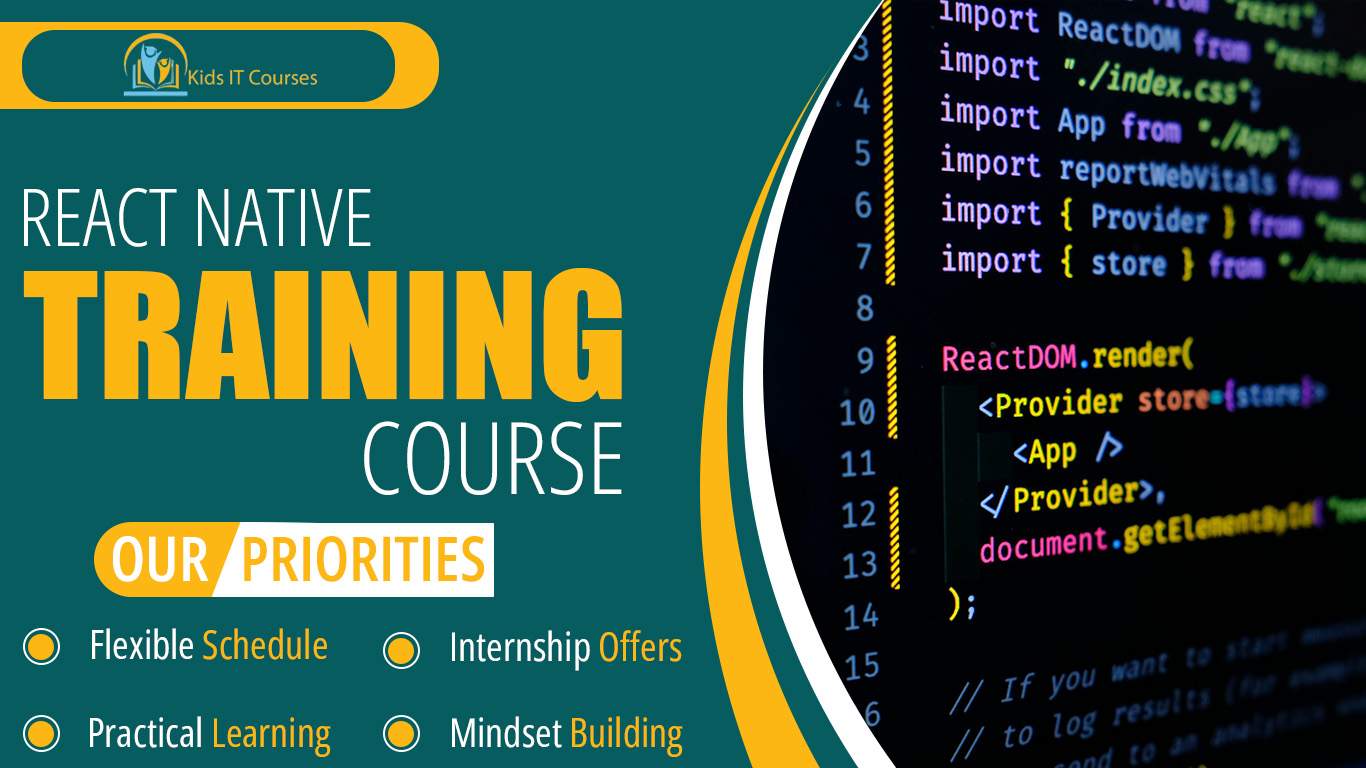
Reactive Native Training Course for Kids
Definition
• React Native helps build apps. Kids make apps for phones.
• It uses JavaScript language. Easy and fun to learn.
• Kids create buttons and screens. Apps look cool and work well.
• They learn to fix problems. Make apps better and faster.
• Kids test their own apps. See how they work.
• It teaches coding and design. Both together in one course.
• Prepares kids for future tech. App making is a cool skill.
Importance
• React Native helps build apps. Kids learn to make games.
• It works on phones. Both Android and iPhone.
• Kids learn to code fast. With easy tools and steps.
• They see results quickly. Making fun projects live.
• It teaches problem solving. Fixing bugs and errors.
• Kids get creative skills. Designing apps their way.
• It opens future doors. For jobs in technology.
Advantages for Freelancing
• Kids learn to build apps. Apps work on phones and tablets.
• It teaches coding with fun. Easy to understand and use.
• Kids can make games. And share with friends.
• It helps creativity grow. Making cool app designs.
• Kids learn problem solving. Fix bugs and improve apps.
• It builds future tech skills. Great for school and jobs.
Session 1 : Introduction to React Native
What is React Native and why it’s great for mobile app development
Real-life example: Building an app that works on both Android and iOS
How React Native uses JavaScript to build native mobile apps
Setting up your development environment (Node.js, React Native CLI, Expo)
Activity: Create your first “Hello World” app using React Native
Session 2 : React Native Components and JSX
What are components and how they structure your app
Real-life example: A phone app screen made up of buttons and text (components)
Understanding JSX and how it differs from HTML
Creating simple components like
<View>,<Text>,<Button>Activity: Build a basic screen layout with React Native components
Session 3 : Styling in React Native
How to style components using
StyleSheetReal-life example: Decorating a room with colors and furniture (styling)
Understanding flexbox for layout in React Native
Activity: Style your app screen with colors, fonts, and padding
Session 4 : Navigating Between Screens
Introduction to React Navigation and why it’s important
Real-life example: A menu to switch between pages (app navigation)
Setting up stack and tab navigation
Activity: Create an app with multiple screens and navigation
Session 5 : Working with User Input
How to handle text input and button presses in React Native
Real-life example: A calculator app where users enter numbers and press buttons
Using
<TextInput>and<Button>componentsActivity: Build a simple login form with text inputs
Session 6 : Fetching Data from APIs
Introduction to API calls and how they connect your app to the web
Real-life example: A weather app that gets real-time data from an API
Using
fetch()to retrieve data and display it in the appActivity: Build an app that fetches and displays random jokes from an API
Session 7 : Managing State with React Native
What is state and why it’s important for app functionality
Real-life example: A to-do list where you add and remove tasks (state management)
Using
useState()anduseEffect()to manage app stateActivity: Build a to-do list app that allows adding and removing tasks
Session 8 : Final Project – Build a Complete React Native App
Plan and build a simple mobile app using React Native
Use navigation, forms, data fetching, and state management
Test your app on Android and iOS simulators
Activity: Present your project, explaining the key features
Bonus Materials
React Native development environment setup guide
List of useful React Native libraries and tools
Sample React Native project templates for practice
Interactive coding challenges and quizzes
Certificate of Completion for React Native Basics
